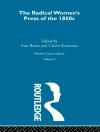The Portrait of Beatrice examines both Dante’s and D. G. Rossetti’s intellectual experiences in the light of a common concern about visuality. Both render, in different times and contexts, something that resists clear representation, be it the divine beauty of the angel-women or the depiction of the painter’s own interiority in a secularized age. By analyzing Dante’s Vita Nova alongside Rossetti’s Hand and Soul and St. Agnes of Intercession, which inaugurates the Victorian genre of ‘imaginary portrait’ tales, this book examines how Dante and Rossetti explore the tension between word and image by creating ‘imaginary portraits.’ The imaginary portrait—Dante’s sketched angel appearing in the Vita Nova or the paintings evoked in Rossetti’s narratives—is not (only) a non-existent artwork: it is an artwork whose existence lies elsewhere, in the words alluding to its inexpressible quality. At the same time, thinking of Beatrice as an ‘imaginary Lady’ enables us to move beyond the debate about her actual existence. Rather, it allows us to focus on her reality as a miracle made into flesh, which language seeks incessantly to grasp. Thus, the intergenerational dialogue between Dante and Rossetti—and between thirteenth and nineteenth centuries, literature and painting, Italy and England—takes place between different media, oscillating between representation and denial, mimesis and difference, concealment and performance. From medieval Florence to Victorian London, Beatrice’s ‘imaginary portrait’ touches upon the intertwinement of desire, poetry, and art-making in Western culture.
สารบัญ
Introduction
1. Painting Angels
2. Early Italian Poets, Early Italian Painters
3. Visions
Conclusion: Veils
เกี่ยวกับผู้แต่ง
Fabio Camilletti is reader at the School of Modern Languages and Cultures at the University of Warwick. He is the author of a number of books, including Leopardi’s Nymphs: Grace, Melancholy, and the Uncanny.












